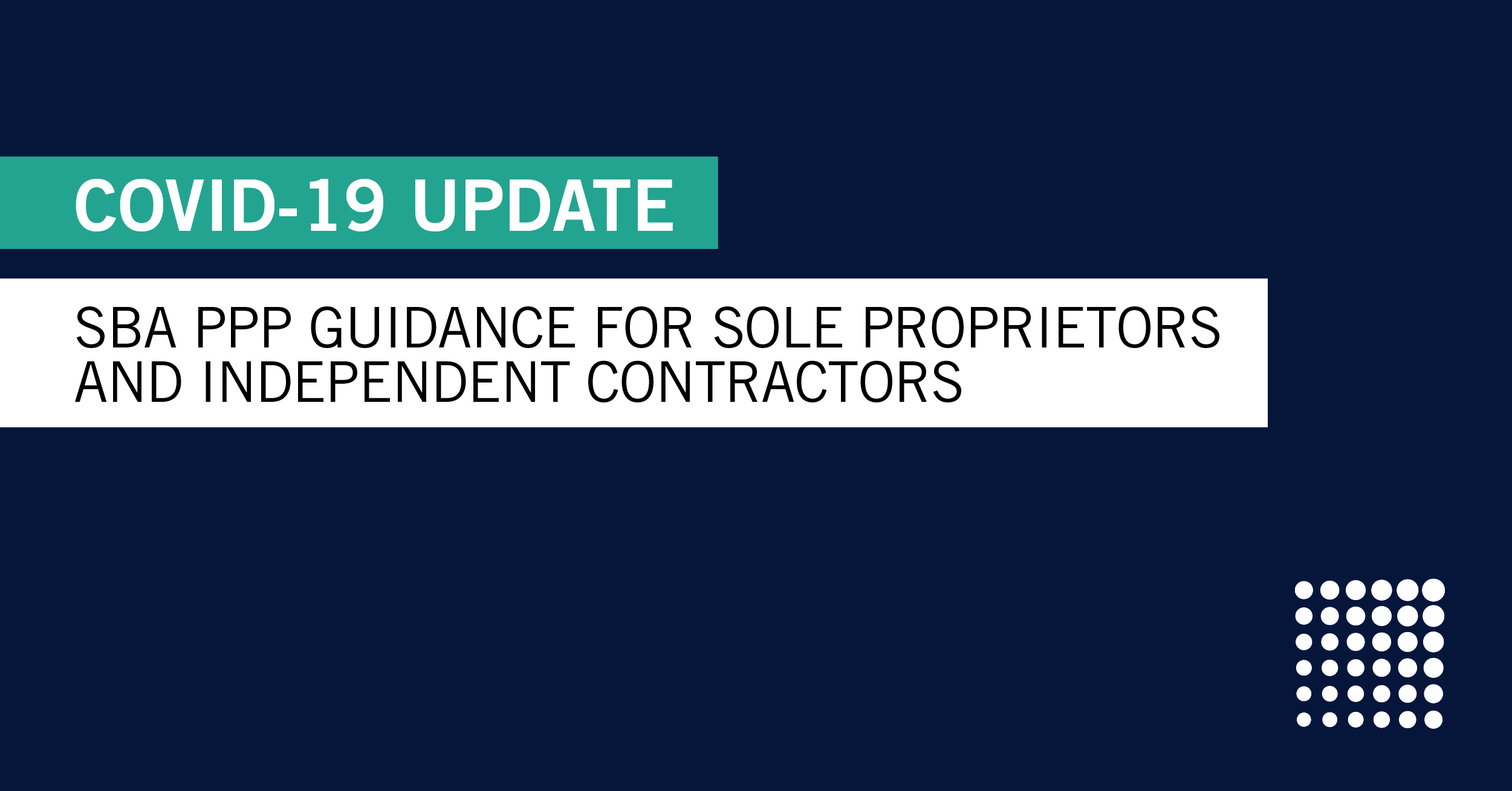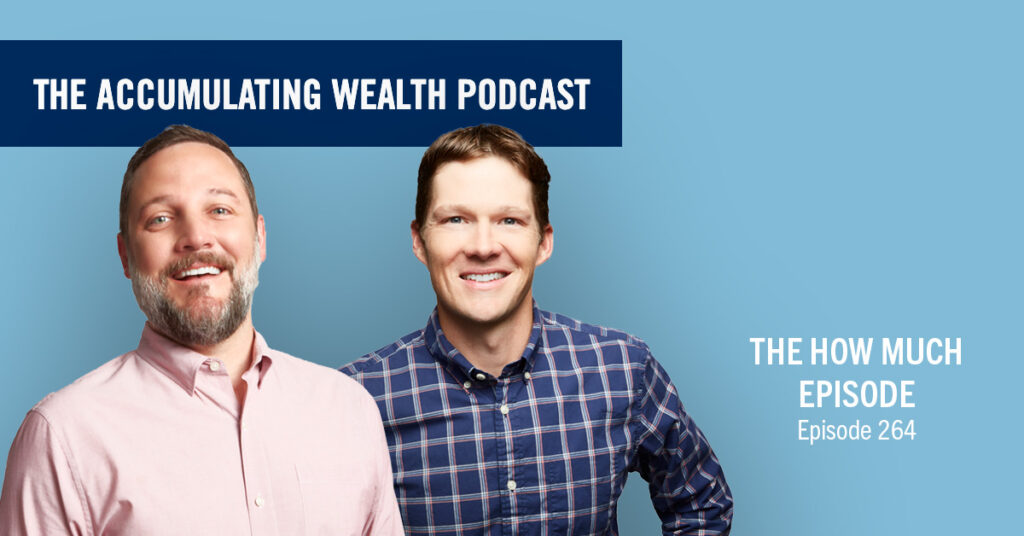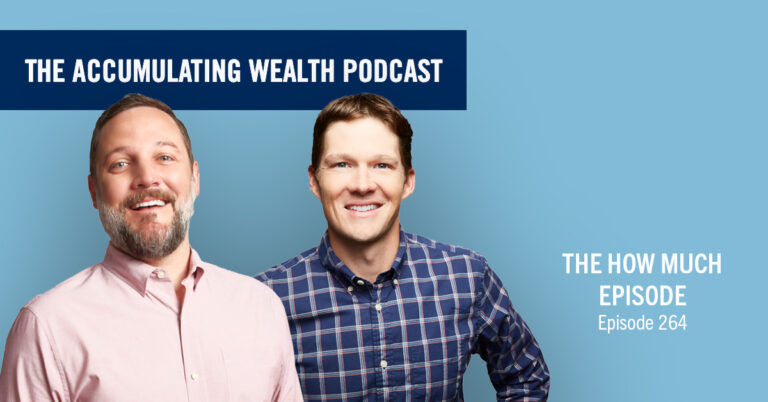Clarification on loan amount, qualified expenses and forgiveness eligibility
On April 14, 2020, the Small Business Administration (SBA) issued a new Interim Final Rule (IFR) on the Paycheck Protection Program (PPP) for sole proprietors and independent contractors.
Guidance on the Application for a PPP Loan by Sole Proprietor
The first piece of guidance released by the SBA is clarification on the loan amount that a sole proprietor may qualify for. The components to the loan calculation are as follows:
- Owner compensation: This is calculated based on your 2019 1040 Schedule C, line 31 (net profit amount) and is capped at $100,000 annually.
- Employee salaries: These include all gross wages paid to your employees shown on your Form 941, line 5c.
- Health insurance: Employer paid health insurance contributions as shown on Schedule C, line 14
- Retirement: Retirement contributions as shown on Schedule C, line 19. Importantly this does not include the owner’s portion of retirement contributions which are shown elsewhere on the tax return.
- Taxes: State and local taxes assessed on employee compensation (primarily SUTA).
The above amounts are annualized and then divided by 12 before applying the 2.5x multiple to calculate the loan.
Additionally, the guidance states that a sole proprietor who is a partner in a partnership may not submit a separate PPP loan application as a self-employed individual. In this case the self-employment earnings would be applied for at the partnership level as a payroll cost up to a maximum of $100,000 annualized.
This is new guidance, so for those partnership clients that have already applied for a PPP loan; there is no clarification on how this will be remediated.
The guidance is clear that you must supply your 2019 Schedule C and 2019 Form 1099-MISC (if you receive this), detailing non-employee compensation received in order to apply for a PPP loan. This is required in order to substantiate the expenses that are being used to calculate your maximum loan amount.
The Schedule C does not need to be filed, but it must be filled out and supplied to the lender to substantiate taking the loan. The SBA will release additional guidance for those self-employed individuals who were not in operation in 2019 but were in operation before February 15, 2020.
Applicability to CWA clients:
For all clients regardless of filing type it is important to understand the above guidance on health insurance and retirement contributions; that is, the amounts eligible for loan calculation do not include the owner’s portion of health insurance and retirement contributions (more on this below in regard to forgiveness).
Qualified Expenses for the PPP Loan for a Sole Proprietor
The proceeds of the PPP loan are to be used for:
- Owner’s compensation up to $100,000, annualized as calculated by net profit (Schedule C, line 31)
- Employee payroll costs (as discussed in previous guidance)
- Mortgage interest payments on business obligations related to real or personal property
- Business rent payments and business utility payments
The guidance is unclear on rent paid to a related party (e.g. the owner of the dental practice also owns the dental building and rents back to the dental practice). It points to the interest on the mortgage being a qualified expense, but then later states the rent payment would be a qualified expense. CWA would recommend awaiting further guidance before making an assumption in this case.
In order to use PPP money on an expense, you must have claimed a deduction or be entitled to claim a deduction on the expense on your 2019 Schedule C. This means if you use PPP money for a utility bill you must have claimed a deduction in 2019 for this similar expense.
Expenses Eligible for Forgiveness
The above expenses are eligible to spend PPP proceeds on. However, there is additional clarification on what is eligible for forgiveness. For employees (but not owners), salary up to $100,000 annualized is eligible for forgiveness. This is calculated on a weekly basis so only 8/52nds (8 weeks out of 52 weeks) will be eligible, or a maximum of $15,385 per employee.
The other eligible expenses of retirement contributions, health insurance premiums, rent, utilities and interest are also eligible to be forgiven. However, the guidance indicates that sole proprietors are only eligible to receive forgiveness of $100,000 maximum of Schedule C, line 31 for their own compensation. This means the $100,000 maximum is inclusive of retirement contributions and health insurance for owners only.
Additionally, it is noted that the above limitations are being imposed because Congress didn’t intend for the PPP loan to be a “windfall” for the owner of the business. The intention of the program was to keep workers paid. This statement in conjunction with the understanding that an expense had to be incurred in 2019 in order to be eligible likely means there will not be the opportunity to lump sum fund retirement contributions, salaries for employees, or deferred rent and utilities. This is not clearly stated in the guidance but can be assumed given the wording in the IFR.
Applicability to CWA clients:
For all clients, regardless of filing type, the cap of $100,000 on owner’s compensation is an important clarifying point.
Assuming this holds true for other entity structures, this likely limits the PPP to be used for $100,000 annualized ($15,385 for the eight weeks) for the owner inclusive of retirement contributions and health insurance.
Also, expenses will only be eligible if such expense was incurred in 2019. This limits the ability to add new expenses to qualify for forgiveness. For many CWA clients that remain closed this means the forgiveness problem gets even harder to solve. Being limited to $15,385 total in forgiveness for an owner significantly inhibits the ability to receive max forgiveness on this loan while your office remains closed.
It feels as if each time a new IFR is released, benefits for business owners become increasingly narrowed. CWA believes this new IFR foreshadows future guidance on the forgiveness of PPP loans for all self-employed individuals, whether sole proprietor or incorporated.
In conclusion, we encourage you to read our strategy following this new IFR for consideration during the decision process.
Stay up to date with our latest news and strategy on our COVID-19 Resources page. If you are not a CWA client, but feel you could benefit from an experienced advisor guiding you through this process, contact a member of our team for a complimentary consultation.














